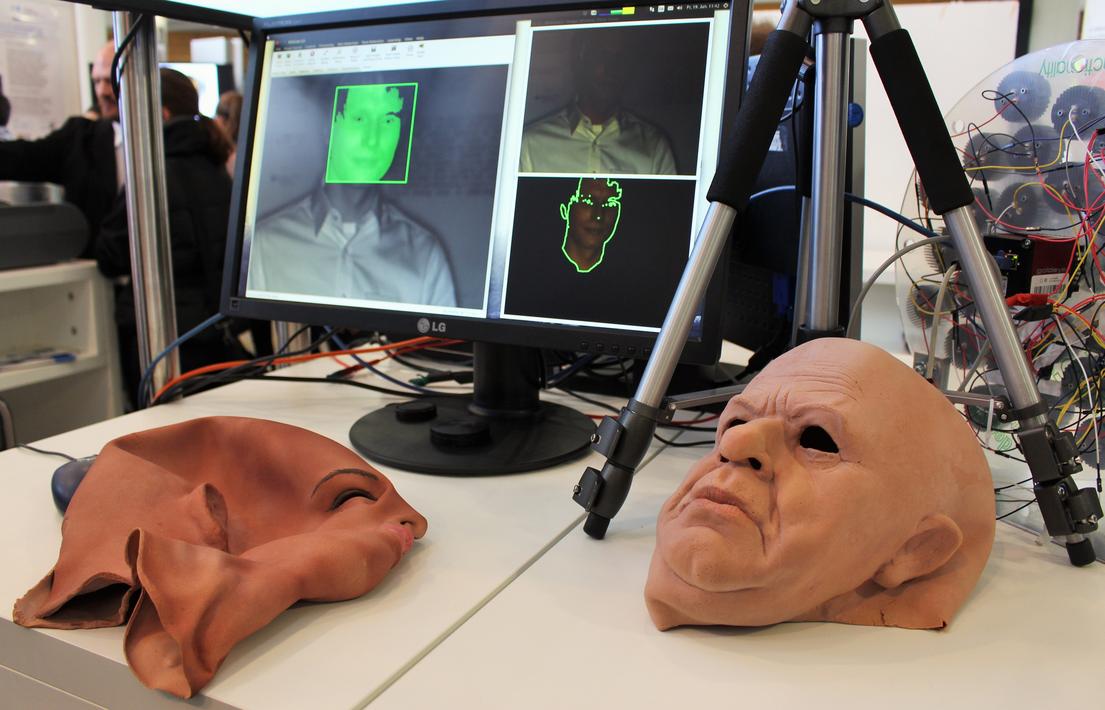All EU member states are to network their police facial images and investigation files across Europe. This puts pressure on some governments without such systems.
The European Economic and Social Committee (EESC) has criticised plans to oblige all EU member states to set up a uniform system for police searches of facial images. The EU Commission had presented such a proposal for a new regulation in December. It is to extend the automated data exchange under the Prüm decisions to facial recognition.
In its opinion, the EESC writes that member states should decide for themselves whether to follow the extension of the Prüm system to facial recognition, which was adopted in 2008. So far, such matching is only possible for fingerprints and non-coding DNA data.
Council has even extended proposal
With its proposal for a Prüm II, the Commission wants to improve “interoperability” with other EU information systems. It envisages a new technical infrastructure with a central router through which one police authority can send its biometric queries to all connected states.
The EESC is not fundamentally opposed to the plans. However, the member states should not be put under pressure. In particular, the EESC criticises the fact that even those countries that do not have facial recognition systems will have to provide them.
Eleven EU member states have a police photo identification system that could be connected to the new Prüm system, and seven others have been working on it in recent years. Nine countries are not yet ready for Prüm II, but some are preparing legislation (Belgium, Bulgaria, Denmark, Ireland, Luxembourg, Malta, Poland, Portugal, Slovakia).
Currently, the member states are discussing their position on the regulation in the Council. The original version was expanded for the negotiations with the Parliament, and now it should even be possible to query photographs in driving licence databases.
Treat data “with tremendous delicacy”
The EESC also “fully recognises” the objective of the planned regulation to “contribute to internal security in the EU”. However, if the EU-wide establishment of databases for facial recognition and the exchange of this data were to become truly mandatory, it should be “treated with tremendous delicacy.”. This would also apply if the data were encrypted.
According to the plans, the retrieval of facial images is to take place in the “hit/no hit principle”, which means that the requesting authority initially has no access to the personal data behind it. This system goes back to a development of the German Federal Criminal Police Office.
The proposal for a Prüm II also regulates the establishment of a European Police Record Index System (EPRIS). Similar to biometric data, this would request investigation files of police forces in all EU member states. In many cases, these are people who have not been charged with or convicted of any crime.
Warning against criminalisation of aiding refugees
The EESC is also critical of the EPRIS, as law enforcement agencies in different Member States “appear to have different standards for defining and registering suspects and criminals”.
This could lead to situations “where suspects in one Member State, e.g. in relation to activities for refugee rights, enter the criminal record of another Member State”. In particular, governments of countries such as Greece, Hungary or even Italy are known for criminalising assistance to refugees.
The EESC therefore proposes to establish “solid and shared criteria” for the offences covered by EPRIS be established for exchange. The decision on the European Arrest Warrant, for example, contains such a catalogue of offences for which cooperation is possible at all.
Criticism of travel restrictions due to pandemic
The European Economic and Social Committee is a federation of associations from all EU member states and is supposed to represent “organised civil society”. Currently, the EESC has 329 members. They come from trade unions or from social, professional, economic and cultural interest groups, but also from employers’ organisations. The Committee cannot take binding decisions, but its opinions are often taken into account by the Commission.
In addition to the regulation for a “Prüm II”, the EESC has critically assessed three other proposals for regulations. The EU member states are discussing a new Schengen Borders Code, which the Commission also published in December. It aims to curb the excessive practice of some member states to reintroduce internal border controls and extend them over several years.
This position is strengthened by the EESC. Pandemics in particular should not be a reason to reintroduce border controls in the Schengen area. Travel restrictions between states should not go beyond measures also imposed within member states. Otherwise, the concept of an area without internal border controls as “part of Europe’s DNA” would be undermined.
No better treatment of “essential” journeys
The opinion does not yet contain a reference to the European Court of Justice (ECJ), which judged the chain extension of internal border controls to be incompatible with the Schengen Borders Code in early May. Before the Commission and the Council negotiate further with the Parliament on the Schengen Borders Code, it must be rewritten in accordance with the ECJ ruling.
In future, the reintroduction of internal border controls should only be allowed on the basis of a list of criteria. Their extension for the same reason would be impossible. However, the proposed regulation distinguishes between “essential” and “non-essential” travel in the Schengen area. According to the EESC, this too “posing a serious threat to the foundations of Schengen”.
Finally, the EESC also criticises the risk of racial profiling at internal borders. Asylum seekers encountered there should be “treated with dignity and informed about their rights instead of legalising forms of internal pushbacks”. The proportionality of control and surveillance technologies used at the internal and external borders of the Union should be reviewed. Civil rights organisations could also help with this.
Image: In the FeGeb project, the German Federal Ministry of Education and Research funded the development of a system that can also recognise forgeries (Bonn-Rhein-Sieg University of Applied Sciences).





Leave a Reply